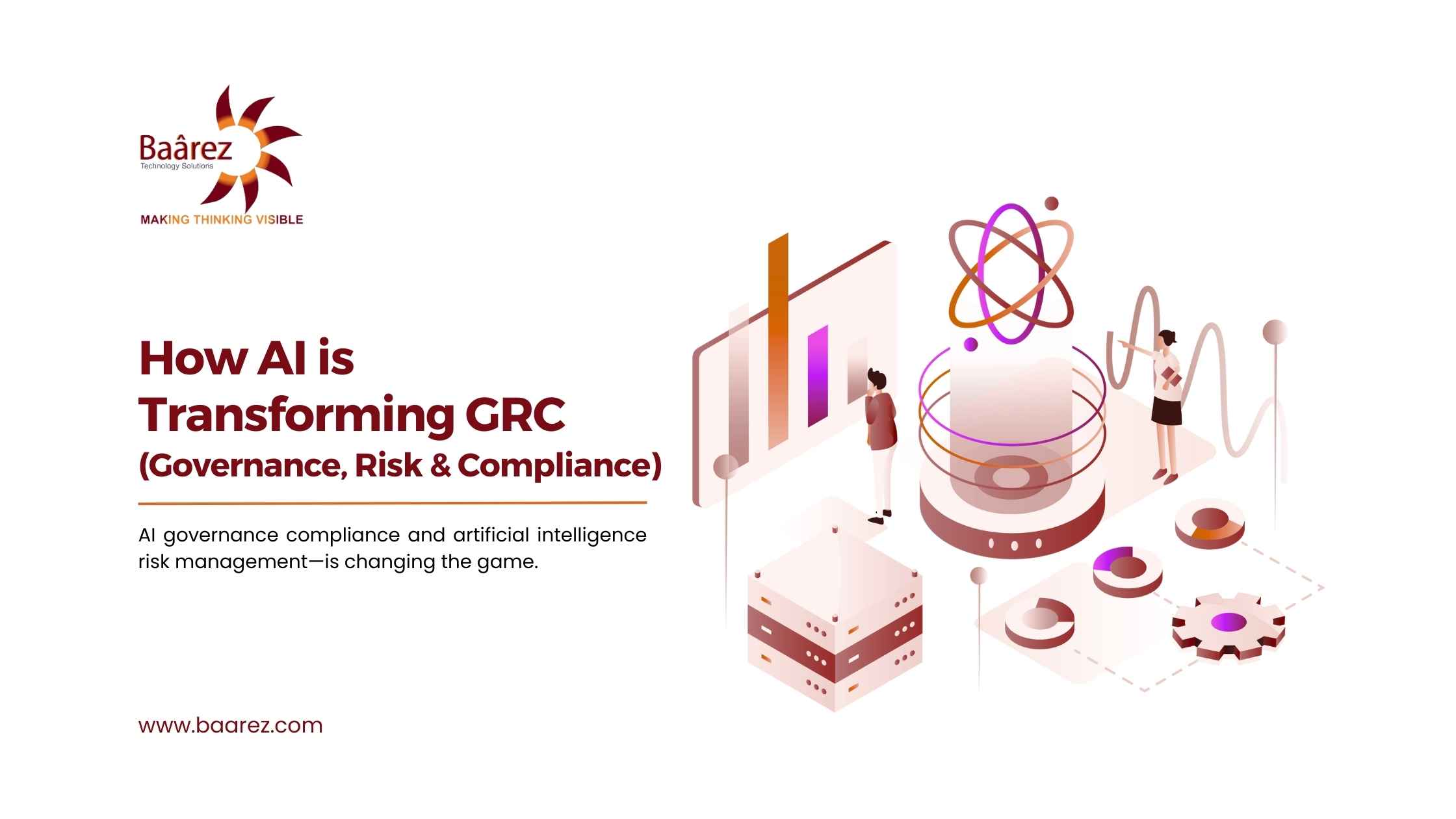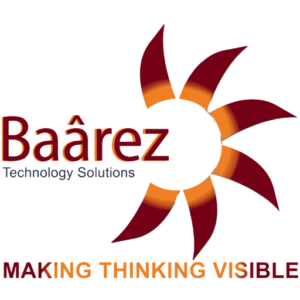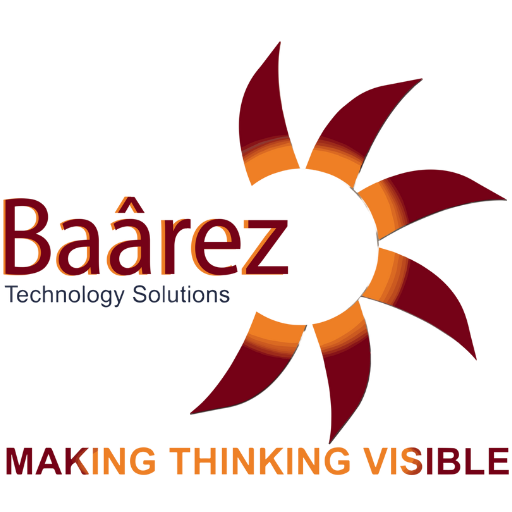
Managing governance, risk, and compliance (GRC) has always been a complex challenge for organizations. With constantly evolving regulations, rising cyber threats, and increasing operational risks, traditional GRC methods often fall short. This is where AI in GRC—also known as AI governance compliance and artificial intelligence risk management—is changing the game.
Artificial Intelligence (AI) is helping businesses automate compliance, detect risks earlier, and make smarter decisions. Whether it’s streamlining audits, monitoring regulatory changes, or predicting cyber threats, AI is reshaping how organizations approach GRC in 2025 and beyond.
Table of Contents
ToggleWhat is GRC and Why Does it Matter?
Governance, Risk, and Compliance (GRC) is a framework that helps organizations manage their policies, risks, and regulatory obligations in a structured way. Each component plays an important role:
- Governance ensures that business activities align with organizational goals, ethics, and standards.
- Risk Management identifies, analyzes, and mitigates threats that could disrupt operations.
- Compliance ensures adherence to laws, regulations, and industry standards.
Why GRC Matters
In today’s business environment, GRC has become more than just a checkbox exercise. Companies face increasing challenges such as:
- Complex Regulations – Constantly changing global and regional laws.
- Cybersecurity Threats – Rising ransomware, phishing, and data breaches.
- Operational Risks – Supply chain disruptions, third-party risks, and financial fraud.
- Reputation Risks – Negative impact on trust and brand image due to non-compliance.
Without a strong GRC framework, organizations risk heavy penalties, legal consequences, and loss of customer trust.
Traditional GRC Limitations
While GRC is essential, traditional approaches are often manual, time-consuming, and error-prone. This creates challenges such as:
Challenge | Impact on Business |
Manual compliance checks | Higher risk of human error |
Fragmented data | Inconsistent reporting |
Slow risk detection | Delayed response to threats |
Regulatory overload | Difficulty staying updated |
This is why AI in GRC has become a necessity—helping organizations move from reactive to proactive risk and compliance management.
What is AI in GRC?
AI in GRC (Governance, Risk & Compliance) refers to the integration of artificial intelligence technologies into GRC processes to make them faster, smarter, and more efficient. Instead of relying solely on manual processes and spreadsheets, organizations are now leveraging AI to automate compliance, monitor risks in real time, and adapt to changing regulations.
How AI in GRC is Different from Traditional GRC
- Traditional GRC: Rule-based, manual monitoring, reactive in nature.
- AI-Powered GRC: Predictive, automated, and capable of learning from data patterns.
This shift allows companies to move from reactive risk management to proactive and predictive governance.
Key AI Technologies Powering GRC
AI is not a single tool—it’s a combination of multiple technologies working together to strengthen governance, risk, and compliance:
AI Technology | Role in GRC |
Machine Learning (ML) | Identifies risk patterns and predicts potential threats. |
Natural Language Processing (NLP) | Reads and interprets regulatory texts, contracts, and policies. |
Robotic Process Automation (RPA) | Automates repetitive compliance tasks like reporting and audits. |
Predictive Analytics | Forecasts risks, fraud, and compliance issues before they occur. |
Why Organizations are Adopting AI in GRC
- To reduce costs of manual compliance operations.
- To stay updated with global regulatory changes in real time.
- To identify hidden risks in complex data sets.
- To improve reporting accuracy for audits and regulators.
In short, AI governance compliance ensures that businesses are not only meeting today’s regulatory standards but also preparing for the risks of tomorrow.
Benefits of Using AI in GRC
Implementing AI in GRC brings multiple advantages that go beyond efficiency. Organizations can reduce costs, improve decision-making, and stay ahead of risks. Below are the key benefits explained in detail.
1. Automation of Repetitive Tasks
AI, especially through Robotic Process Automation (RPA), can handle tasks such as:
- Compliance reporting
- Policy documentation
- Audit preparation
- Data entry and validation
This reduces human error and frees compliance teams to focus on strategic decision-making.
2. Real-Time Risk Monitoring and Detection
Traditional risk management often identifies threats after they occur. With AI:
- Machine Learning models can detect unusual financial transactions.
- AI-powered cybersecurity tools monitor for malware, phishing, and ransomware.
- AI continuously scans vendor and supply chain risks.
This makes artificial intelligence risk management proactive instead of reactive.
3. Improved Accuracy in Compliance Reporting
AI ensures compliance data is:
- Consistent
- Standardized
- Up-to-date with the latest regulatory requirements
This helps avoid costly penalties and failed audits.
4. Cost Savings and Efficiency Gains
By automating compliance workflows, organizations reduce:
- Operational costs
- Employee workload
- Time spent on manual monitoring
According to industry reports, AI can cut compliance costs by 30–40%.
5. Better Decision-Making with Predictive Insights
AI-driven analytics provide:
- Early warnings of potential risks
- Insights into emerging regulatory trends
- Predictive forecasting for fraud or compliance breaches
This helps leadership make data-backed governance decisions.
In short, AI in GRC enables organizations to operate smarter, faster, and more securely while reducing risks and costs.
How AI is Transforming Governance
Governance is about ensuring that an organization’s operations, policies, and decisions align with its mission, values, and regulatory requirements. Traditionally, governance relied heavily on manual oversight and board-level reviews. Today, AI in governance compliance is bringing transparency, accountability, and data-driven decision-making to the forefront.
1. AI-Driven Decision Support for Leadership
- AI provides executives and boards with real-time dashboards.
- Predictive analytics highlight potential governance issues before they escalate.
- Leaders can make informed decisions backed by data rather than intuition alone.
2. Monitoring Ethical Standards and Corporate Policies
AI can monitor employee activities, communications, and business practices to ensure they align with ethical codes and internal policies. For example:
- Detecting insider trading risks.
- Identifying conflicts of interest.
- Ensuring ESG (Environmental, Social, and Governance) compliance.
3. AI Tools for Policy Management and Enforcement
AI-powered systems can:
- Analyze new laws and regulations.
- Suggest necessary updates to corporate policies.
- Automate enforcement of rules across departments.
This reduces policy gaps and strengthens organizational governance.
In short, AI in governance compliance allows organizations to be more transparent, proactive, and aligned with ethical as well as regulatory expectations.
How AI is Transforming Risk Management
Risk management is one of the most critical areas of GRC. Businesses face risks from cyberattacks, financial fraud, third-party vendors, and even global supply chain disruptions. Traditional risk management often reacts after a risk occurs, but artificial intelligence risk management allows companies to detect, predict, and mitigate risks in real time.
1. Fraud Detection and Prevention
- AI systems analyze large volumes of financial transactions.
- Machine learning models identify unusual activity (e.g., sudden spikes in spending, duplicate claims).
- AI helps prevent insider fraud and external financial crimes.
2. Cyber Threat Intelligence
AI strengthens cybersecurity by:
- Detecting malware and ransomware before they spread.
- Identifying phishing attempts through pattern recognition.
- Analyzing user behavior to detect account takeovers.
This makes AI in GRC essential for defending against evolving cyber risks.
3. Predictive Models for Operational and Financial Risks
- AI forecasts supply chain disruptions using predictive analytics.
- Early warnings for credit defaults, cash flow issues, or system failures.
- Enables proactive risk mitigation instead of costly crisis management.
4. Third-Party & Vendor Risk Management
Managing risks from suppliers, partners, and contractors is a big challenge. AI helps by:
- Scanning vendor contracts with NLP to find compliance gaps.
- Monitoring vendor financial stability and cybersecurity posture.
- Providing continuous risk scoring of third-party relationships.
With artificial intelligence risk management, businesses no longer wait for risks to damage operations—they predict, prepare, and act before threats materialize.
How AI is Transforming Compliance
Compliance is one of the most resource-intensive parts of GRC. Organizations must constantly track new regulations, document compliance activities, and prepare for audits. Manual compliance processes are slow, error-prone, and expensive. This is where AI in compliance management makes a major impact by automating and simplifying the process.
1. AI-Powered Compliance Monitoring
- AI continuously monitors organizational activities for compliance violations.
- Automated alerts notify compliance officers in real time.
- Example: AI tools flag suspicious transactions that may violate AML (Anti-Money Laundering) laws.
2. NLP for Regulatory Change Management
- Regulations are updated frequently across industries and regions.
- Natural Language Processing (NLP) helps scan and interpret thousands of pages of legal documents.
- AI automatically maps new regulations to company policies, reducing delays in compliance updates.
3. AI in Regulatory Reporting
- Automates the collection of compliance data across departments.
- Standardizes reporting formats for regulators.
- Saves time during audits by generating real-time compliance reports.
4. Reducing Human Error in Compliance
- Manual compliance work is prone to mistakes.
- AI ensures accuracy by validating data and cross-checking against regulatory requirements.
- This lowers the risk of fines, penalties, and legal disputes.
By adopting AI governance compliance solutions, businesses not only meet regulatory standards but also reduce costs, speed up audits, and improve overall transparency.
Future Trends of AI in GRC
The adoption of AI in GRC is still evolving, and the coming years will bring even more innovation. Businesses that embrace these trends early will gain a significant competitive advantage in governance, risk, and compliance.
1. AI-Powered Predictive Compliance
- Compliance tools will become proactive, not reactive.
- AI will forecast future compliance risks based on regulatory trends.
- Organizations can prepare policies before new laws come into effect.
2. AI + Blockchain for Transparent Audits
- Blockchain will provide tamper-proof audit trails.
- AI will analyze these records for anomalies or risks.
- Together, they will enhance accountability and trust in compliance reporting.
3. Generative AI in Regulatory Research
- Generative AI tools will summarize and interpret complex legal documents.
- Compliance officers will receive simplified explanations of regulations.
- This will save hours of manual research and improve accuracy.
4. AI-Driven ESG (Environmental, Social, Governance) Monitoring
- AI will track ESG performance metrics in real time.
- Companies can demonstrate ethical governance and sustainability to stakeholders.
- Automated ESG reporting will become a regulatory requirement in many regions.
5. Continuous Monitoring with AI
- Instead of periodic audits, AI will provide 24/7 compliance monitoring.
- Risks and violations will be flagged instantly.
- This will make compliance a continuous, living process.
The future of AI in governance compliance is clear: smarter, faster, and more transparent systems that help organizations not only meet regulations but also strengthen trust and resilience.
How Baarez AI GRC Platform Will Help
Baarez Technology Solutions provides an AI-powered GRC platform designed to simplify governance, strengthen risk management, and ensure compliance across industries. Unlike traditional tools, Baarez combines AI governance compliance features with predictive insights, making GRC smarter and more effective.
Key Features of Baarez AI GRC Platform
- Automated Compliance Monitoring – Continuously tracks regulatory changes and ensures policies are always up to date.
- Artificial Intelligence Risk Management – Detects fraud, cyber threats, and operational risks in real time.
- Regulatory Change Management – Uses NLP to scan global regulations and update compliance frameworks instantly.
- Predictive Analytics – Provides early warnings of risks, enabling proactive decision-making.
- Customizable Dashboards – Offers real-time visibility into governance, risk, and compliance metrics.
How It Benefits Your Organization
- Reduce Costs – Automates manual compliance work, saving time and money.
- Stay Compliant – Helps meet international standards like GDPR, HIPAA, and ISO.
- Increase Efficiency – Streamlines reporting and audit preparation.
- Improve Decision-Making – Provides leadership with predictive insights into future risks.
- Enhance Trust – Ensures transparency and accountability across business operations.
By adopting the Baarez AI GRC Platform, organizations can modernize their governance, risk, and compliance framework while staying ahead of evolving regulations and threats.
✅ Ready to Transform Your GRC Strategy?
Take the first step toward smarter governance and risk management with Baarez AI GRC Platform.
📅 Schedule a Demo Today
📧 info@baarez.com | 📞 +971 501371105
Frequently Asked Questions (FAQ) about AI in GRC
-
1. What is AI governance compliance?
AI governance compliance refers to the use of artificial intelligence tools to ensure that an organization’s policies, processes, and operations meet regulatory, ethical, and industry standards. It also involves compliance with AI-related regulations, such as transparency and fairness requirements.
-
2. How does artificial intelligence improve risk management?
Artificial intelligence improves risk management by:
- Detecting unusual patterns that indicate fraud or cyber threats.
- Predicting risks such as supply chain disruptions or financial defaults.
Continuously monitoring vendor and third-party risks.
This makes risk management proactive rather than reactive. -
3. Can AI replace human compliance officers?
No. AI can automate repetitive tasks, generate compliance reports, and highlight risks, but human judgment is still essential. Compliance officers interpret results, make ethical decisions, and manage complex cases that AI cannot fully understand.
-
4. What industries benefit most from AI in GRC?
- Banking & Finance – Fraud detection, regulatory compliance.
- Healthcare – Patient data protection, HIPAA compliance.
- Manufacturing – Supply chain risk management.
- Retail – Vendor compliance and anti-fraud monitoring.
- Technology – Cybersecurity and data privacy compliance.
-
5. Is AI in GRC cost-effective for small businesses?
Yes. While enterprise-level AI tools can be costly, many SaaS-based AI GRC solutions are affordable and scalable. Small businesses can start with AI-powered compliance monitoring or risk scoring tools and expand as needed.
-
6. What are the main challenges of AI in GRC?
- Data privacy and security risks.
- Bias in AI models.
- Over-reliance on automation without human oversight.
- Constantly changing AI regulations that businesses must follow.


